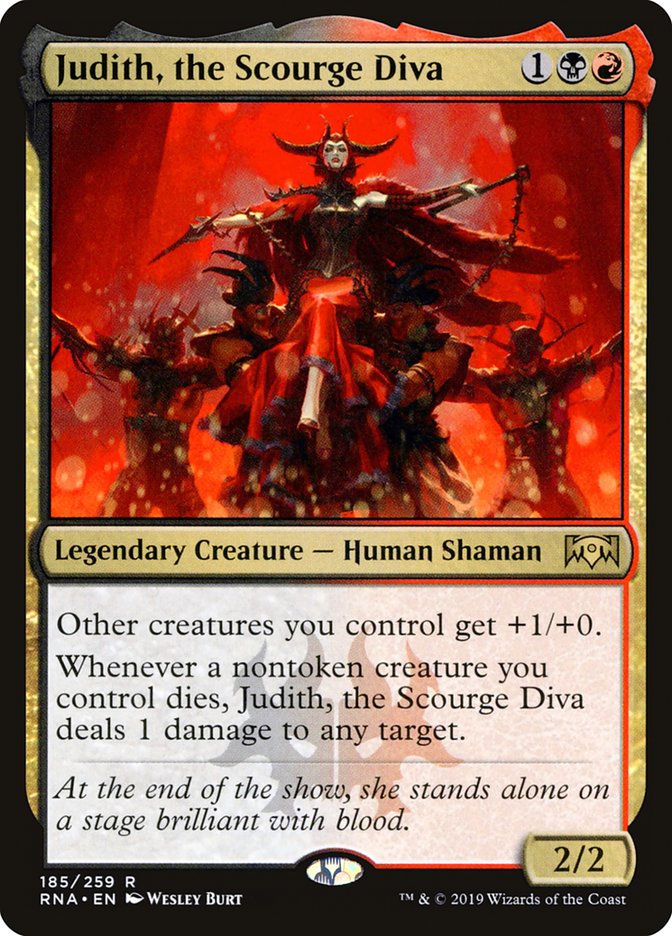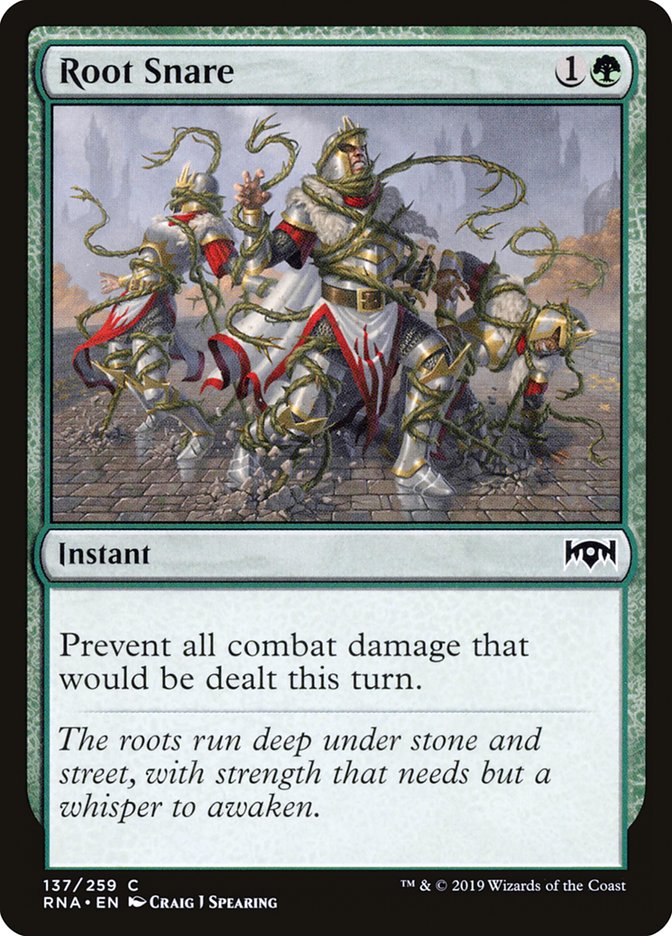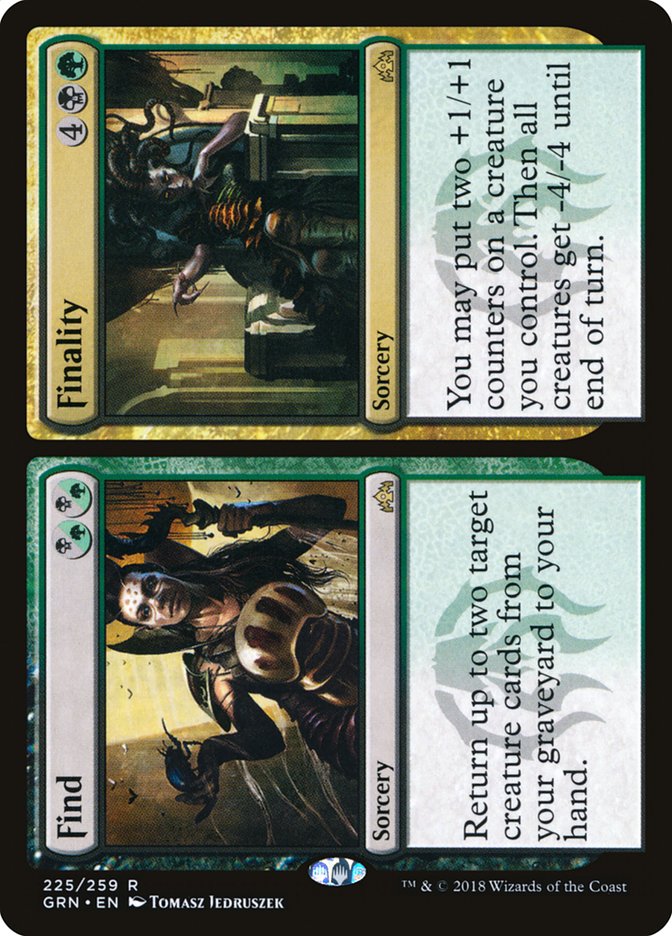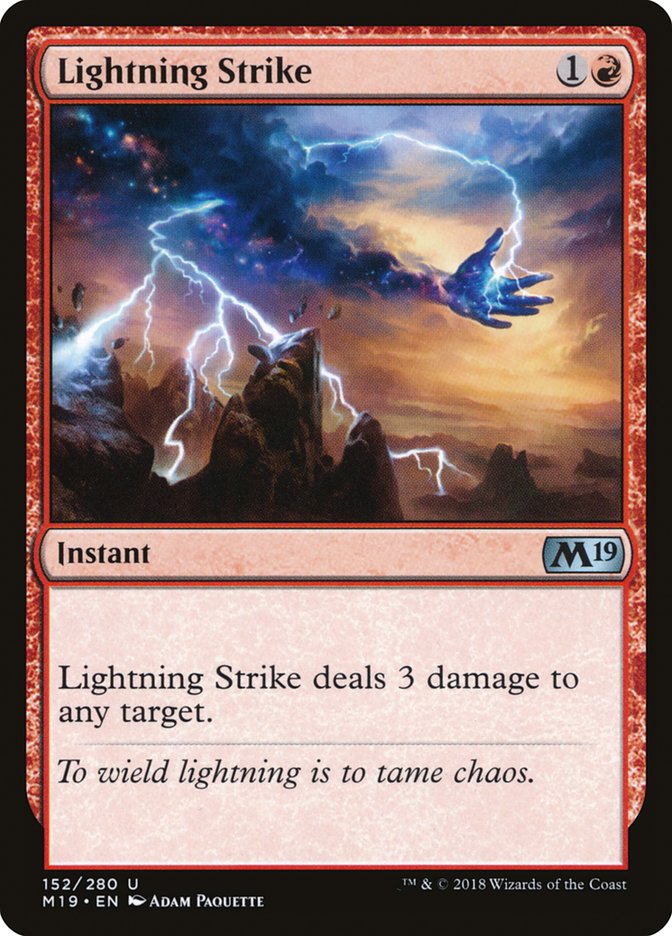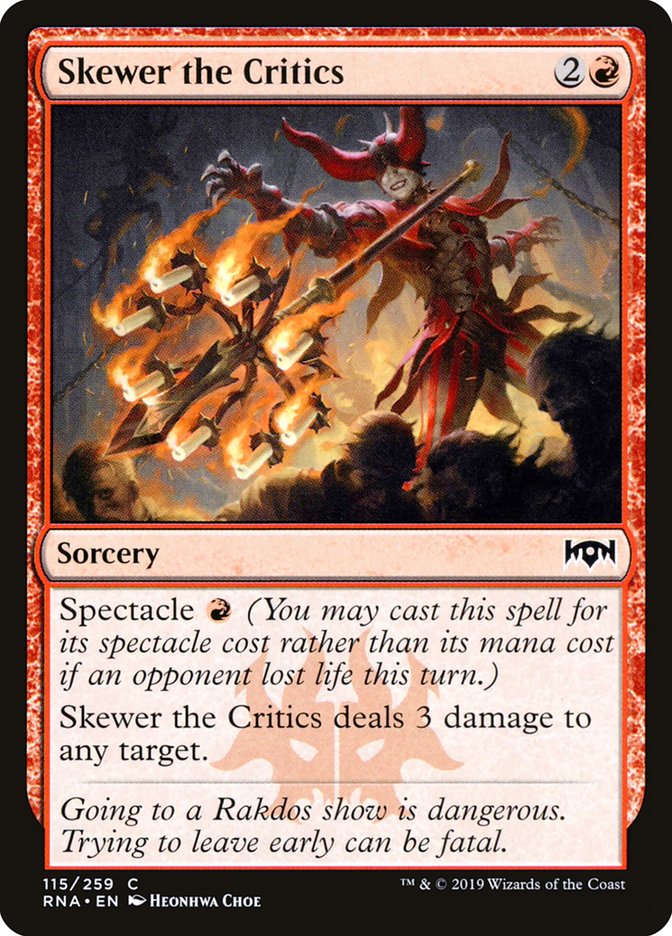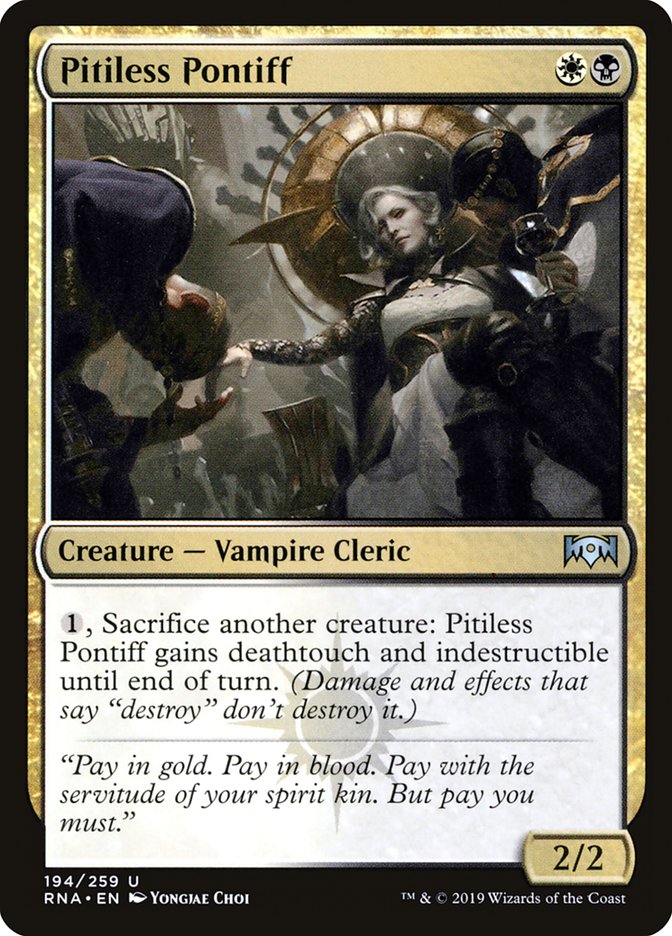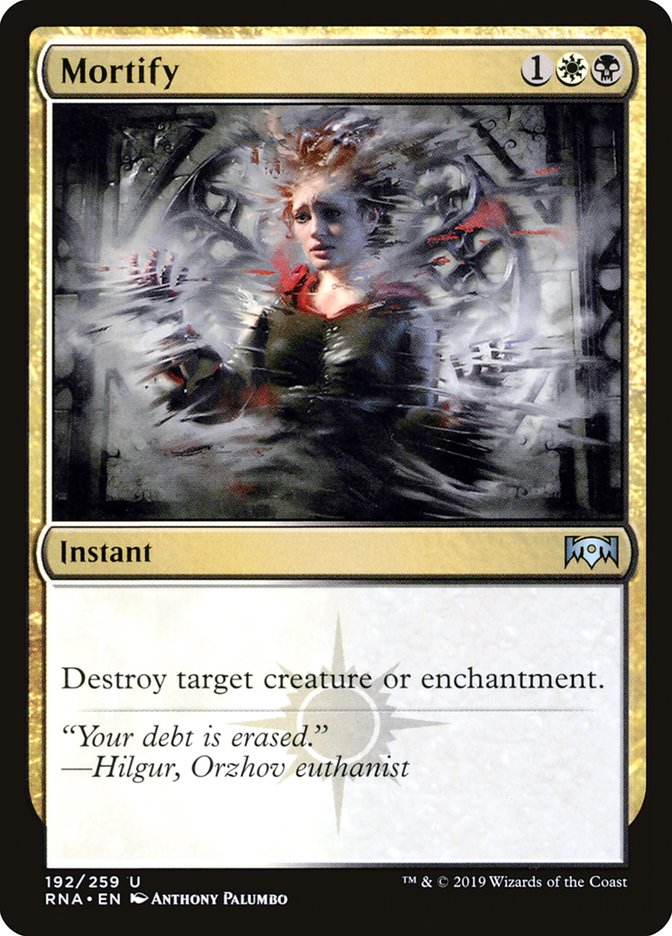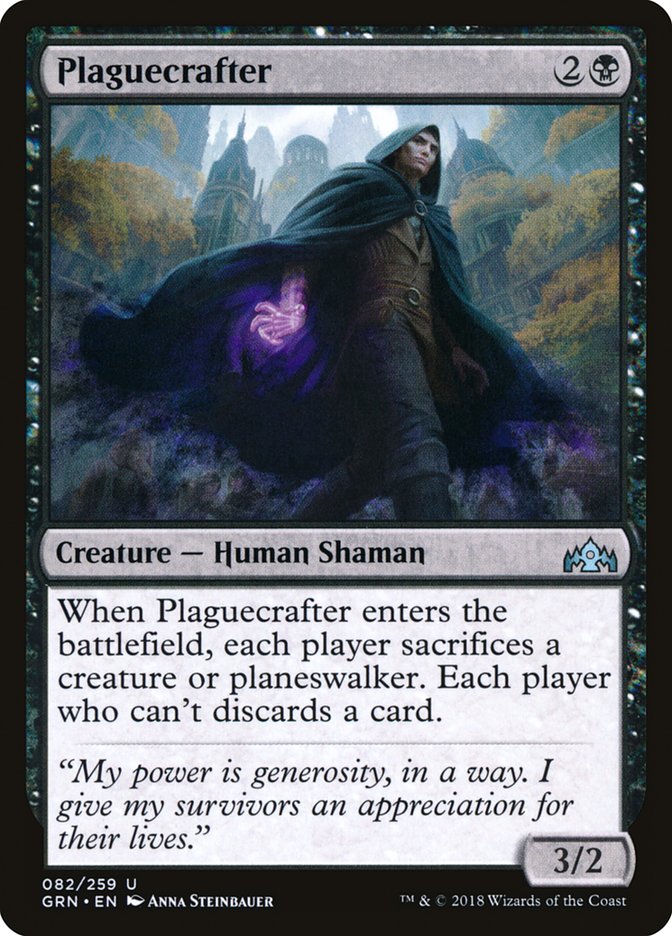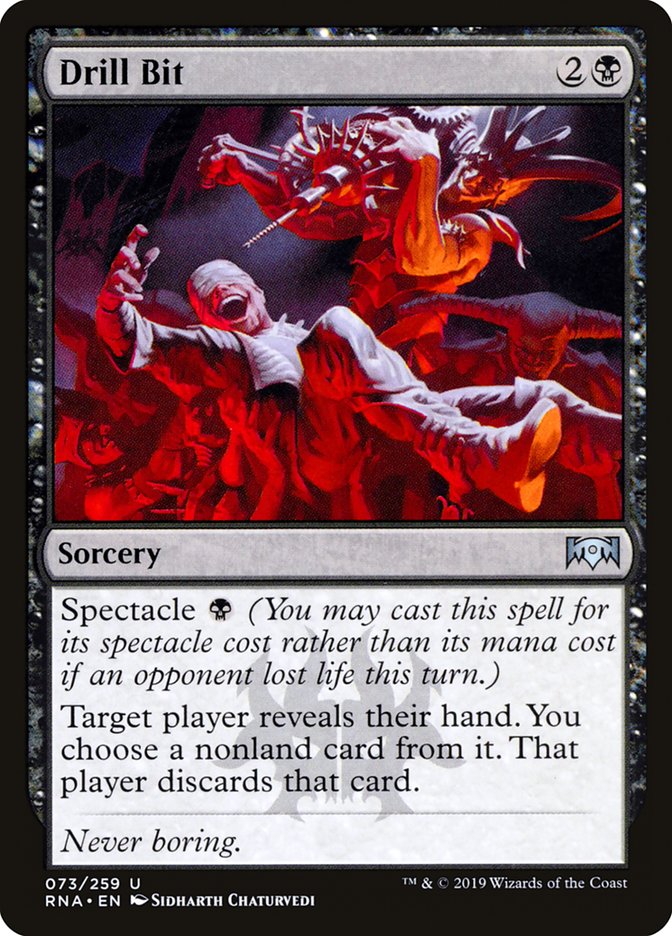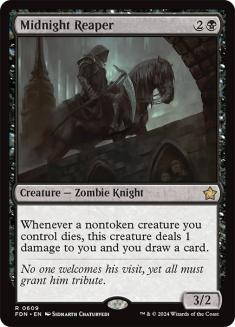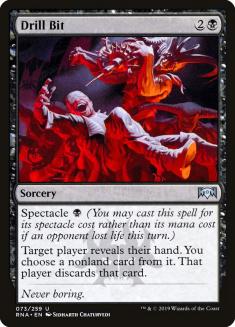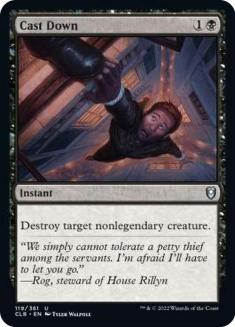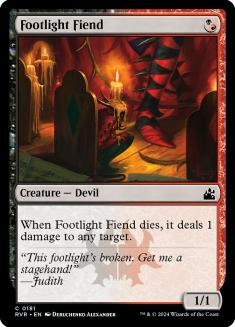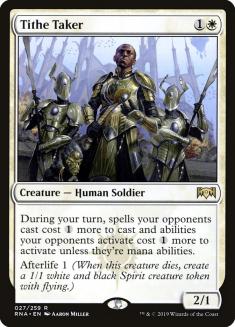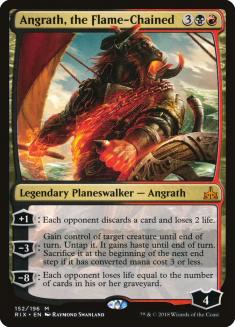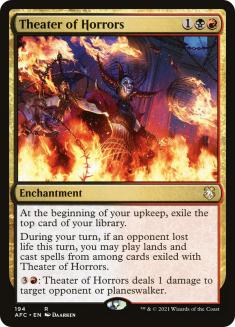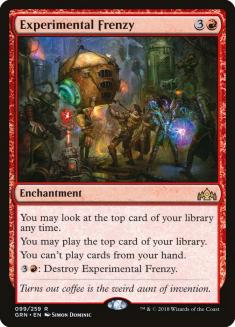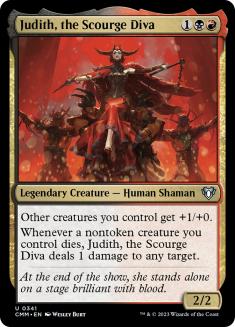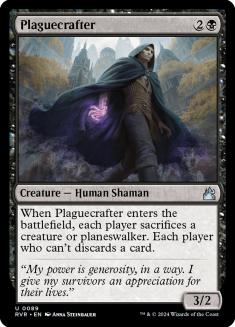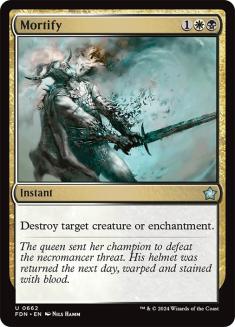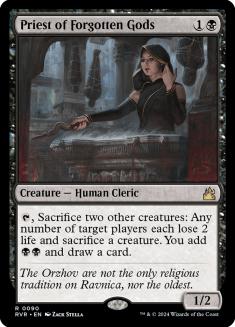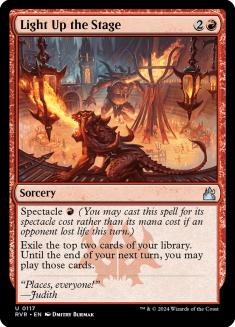My projected #1 card in Ravnica Allegiance has had a rough go of it lately.
Did we misevaluate Judith’s strength? Honestly, I don’t think so. There are still plenty of different versions of decks with Judith doing well online. However, some very specific issues within the metagame have kept Judith from truly succeeding in real life.
Here are the decks in the metagame:
- Esper Control
- Nexus of Fate
- Sultai Midrange
- Esper Midrange
- Izzet Drakes
- Mono-Blue Aggro
- Mono-Red Aggro
- Azorius Aggro
Against aggro decks, you can attempt to control their aggression and win with bigger threats and card advantage or you can try to race them. Given that your creatures are weaker on average – since they’re built for value, not necessarily dominating combat – racing is difficult. Note that difficult doesn’t mean impossible. There are ways to make that truer, but it might not be the most effective solution.
Against control decks, you need a way to beat their sweepers and incidental lifegain before they do something powerful. Protecting Teferi for a few turns against a bunch of Grizzly Bears isn’t difficult and will often be game over.
As far as the Nexus decks are concerned, it’s a pure race. They’re set up to beat you with Root Snares given your overall lack of disruption or reach. That changes after sideboard, but you’re fighting an uphill battle.
The issue with the Sultai matchup is that they refuse to die and eventually reset the game with Finality. Judith decks have the staying power but struggle against a Finality that also makes a large threat. A good solution to that problem is to play more spot removal, although Angrath, the Flame-Chained typically punishes such a play.
Overall, it seems like the macro archetypes in Standard don’t lend themselves well to the midrange-slanting aggressive decks. Is it worth it to try to solve those problems? Can Judith decks actually find a way to thrive in this metagame?
Realistically, Judith decks can grind. There’s as much spot removal as you could possibly want to play, plus you have multiple different engines in Rix Maadi Reveler, Theater of Horrors, and Midnight Reaper.
Another upside for registering Judith is the potential rise in Mono-Blue Aggro, as that matchup is quite easy.
If you want to bring Judith back, you have some options:
- White-based Judith
- Hero of Precinct One Judith
- Rakdos Value Judith
- Rakdos Aggro Judith
Value is no longer the name of the game. Sultai Midrange and Esper Control both go over the top of you, leaving you with extra cards but without a way to meaningfully impact the game. Given that, I’m axing the value-based Rakdos deck as truly viable, even if I do love it dearly and think it’s fine in a vacuum.
The white-based Judith decks – basically double splashing Judith in Mono-White Aggro – are decent, plus they get to play Heroic Reinforcements, which helps against Nexus and Esper. That said, we can do better than the white aggressive creatures.
We’re left with two viable options. The first is to play Rakdos Aggro.
Creatures (30)
- 3 Ravenous Chupacabra
- 1 Viashino Pyromancer
- 3 Legion Warboss
- 4 Rix Maadi Reveler
- 3 Judith, the Scourge Diva
- 4 Spawn of Mayhem
- 4 Gutterbones
- 4 Fireblade Artist
- 4 Footlight Fiend
Planeswalkers (2)
Lands (22)
Spells (6)
Sideboard

This is basically what people conceptualized when most of the spectacle cards had been previewed. It’s odd to me to play spot removal in a deck with Judith because she really wants you to play as many creatures as possible. That’s not entirely necessary, though, and is something I need to get away from.
Lightning Strike and Skewer the Critics help keep things like Wildgrowth Walker under control, which is the easiest way for Sultai Midrange to bridge their medium early game into a game-winning Finality. They also give you some additional reach and aren’t truly dead against Esper Control like normal removal spells would be. When you tag team them with Spawn of Mayhem, Fireblade Artist, and Judith, you end up with a ton of reach.
We never really experimented with Light Up the Stage alongside Judith. It made more sense to utilize her as an Aristocrats-esque engine rather than an aggressive tool, but Light Up the Stage has a ton of merit, as does the aggressive take on the deck in general. This deck could benefit from having a couple of copies of the card.
The final option is what people have basically been doing all this time: Mardu Judith.
Creatures (27)
- 3 Midnight Reaper
- 4 Judith, the Scourge Diva
- 4 Gutterbones
- 4 Fireblade Artist
- 4 Hero of Precinct One
- 4 Priest of Forgotten Gods
- 4 Footlight Fiend
Lands (24)
Spells (9)
Sideboard

There’s a lot to unpack here, and since some of it is already outdated, I’d like to present my updated list first. This is what I’d play:
Creatures (28)
- 3 Midnight Reaper
- 3 Tithe Taker
- 4 Judith, the Scourge Diva
- 4 Pitiless Pontiff
- 4 Gutterbones
- 4 Hero of Precinct One
- 2 Priest of Forgotten Gods
- 4 Footlight Fiend
Lands (23)
Spells (9)

This list isn’t drastically different from what you might expect, but those minor changes end up paying huge dividends.
Since the format is less grindy and has fewer creatures, it’s time to shave Priest of Forgotten Gods. It’s time to cut the sacred cows from what we want our Judith deck to be and turn it into something that the metagame needs. Some copies still linger in the deck because of how powerful it can be, but it’s no longer your Plan A.
We need an extra two-drop, and Tithe Taker seems great at the moment. It can single-handedly destroy Mono-Blue Aggro by not allowing them to interact with you on your turn. The afterlife token from Tithe Taker can be huge against Esper Control. Following a Kaya’s Wrath, a lowly 1/1 can ensure an immediate spectacle, meaning Theater of Horrors (out of the sideboard) or Light Up the Stage stay active, plus any random body is very relevant with Heroic Reinforcements in the mix.
You could make a case for Fireblade Artist over Pitiless Pontiff, but Pontiff is incredible. Green decks can’t attack into it or block it and it survives Kaya’s Wrath. Having a sacrifice outlet makes Judith even more potent. Fireblade Artist might get in more damage in the early game, but Pitiless Pontiff will deal more damage over the course of a game and it’s not particularly close.
Light Up the Stage is a reasonable source of card advantage and velocity, but be aware this isn’t like Mono-Red Aggro where you can fire it off on Turn 2 and expect to be able to play both cards. You have enough three- and four-mana cards that that sort of line can be dangerous. Instead, it’s more of a Turn 3 or 4 card, which is why there are only two copies.
Mortify is a necessity for Wilderness Reclamation decks, so that becomes our removal spell of choice. Out of the sideboard, Plaguecrafter is the best removal spell against decks with Dive Down or Teferi, Hero of Dominaria. There are even minor sacrifice rewards too!
The Drill Bit / Duress mix is carefully crafted. Some decks, like the Mono-Blue, Mono-Red, and Mono-White matchups, all have enough targets to warrant three copies. Against the control and combo decks, Drill Bit is a tad stronger and you want some more disruption for those matchups, which is why playing a mix makes sense.
Similarly, I have a mix of Theater of Horrors and Experimental Frenzy. Having both on the battlefield is completely fine and arguably stronger than having multiple copies of either.
Angrath, the Flame-Chained is the trump to Hydroid Krasis and just a strong card in general. The fact that you have a sacrifice outlet makes it even more appealing. I could see having a single copy maindeck too, if that’s your thing.
Sideboarding Guide
VS Mono-Blue Aggro
Out:
In:
Plaguecrafter could also come in here, but it seems worse than your other cards, especially because they will often have more than one creature on the battlefield. Sure, you could theoretically snipe their Curious Obsession-wearing Tempest Djinn while they’re holding Dive Down, but you’ll probably end up killing a Merfolk Trickster instead.
This matchup is all about lowering your mana curve, disrupting your opponent, and eventually winning the race. Cards like Heroic Reinforcements might look like they’re excellent at winning races, but they’re too clunky and vulnerable to Spell Pierce. The best thing you can be doing against Mono-Blue Aggro is casting two spells a turn and getting ahead of them, since they have very few comeback mechanisms.
VS Sultai Midrange
Out:
In:
This is the most common matchup you’ll face and is among the most intricate. Your weak cards come out for removal and card advantage in order to compete with their stronger late game. You’re the aggressive deck but there are games where you can be the control deck by gaining card advantage and clearing their battlefield. If they gain a bunch of life with Wildgrowth Walker, you may also be pigeonholed into shifting into a control role, even if you don’t necessarily have the tools at the time. Be aware that your role will constantly shift over the course of a game.
VS Izzet Drakes
Out:
In:
This can be one of the easier matchups because Izzet can’t effectively control a wide battlefield. However, if they stick a Drake and you can’t remove it immediately, it’s possible that your entire offense will be shut down. Expect them to shift into a more controlling role after sideboard, which is why you want Theater of Horrors and don’t want the cards that rely entirely on having multiple creatures on the battlefield in order to be effective.
VS Esper Control
Out:
In:
You can shrug off spot removal, disrupt them, draw cards, and can even answer Teferi, Hero of Dominaria! Chemister’s Insight and the like don’t scare you, but an unchecked Teferi or Search for Azcanta will eventually bury you. Thankfully, you have sticky threats, discard spells to disrupt them, and a great answer to sweepers in Heroic Reinforcements.
VS Mono-Red Aggro
Out:
In:
The old Judith decks without Heroic Reinforcements typically lose the race by one turn. After sideboard, you have all the tools you’ll need to slow them down, remove a key burn spell with Duress, and eventually win the race.
VS Azorius Aggro
Out:
In:
Unlike the Mono-Red Aggro matchup, I kind of want to keep in Midnight Reaper here and could especially see doing so on the play. You’ll be doing a fair bit of trading, and as long as you keep them contained, Midnight Reaper could lock up the game by providing you and overwhelming advantage. Unbreakable Formation is their biggest trump card and is extremely potent in those battlefield stalls.
VS Nexus of Fate Decks
Out:
In:
Providing a sideboarding guide for these decks is difficult because they all vary. Most of them will have creatures or planeswalkers after sideboard, so Plaguecrafter makes sense. Whether or not you want Theater of Horrors, Midnight Reaper, or Light Up the Stage is dependent on if they are trying to grind you down with Cleansing Nova and Gates Ablaze or just stall you with Root Snares.
Footlight Fiend is medium but stays in because you care about having a clock. A 1/1 might not seem like much, but it’ll become a Lava Axe over the course of a game and makes Heroic Reinforcements even more threatening.
Angrath, the Flame-Chained is a solid way to disrupt your opponent and punishes them for having Hydroid Krasis or Gatebreaker Ram but isn’t necessarily good against each version. It’s slow and you are better off trying to be as fast as possible in most instances.
Places, Everyone!
If I were playing in SCG Dallas or an RPTQ this weekend, I’d likely sleeve up Mono-Blue Aggro, but Mardu isn’t far behind, especially given how many folks are likely going to pick up Mono-Blue. If you want a deck that smashes them while not being as weak to the rest of the metagame as Azorius Aggro is, you should give Judith another shot.
And, of course, if you’re looking for some nonsense, there’s always this:
Creatures (28)
- 4 Rekindling Phoenix
- 4 Goblin Chainwhirler
- 4 Goblin Instigator
- 4 Rix Maadi Reveler
- 4 Judith, the Scourge Diva
- 4 Priest of Forgotten Gods
- 4 Footlight Fiend
Planeswalkers (1)
Lands (25)
Spells (7)



